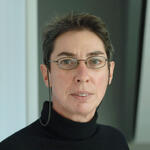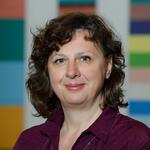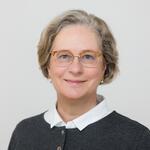A cool new method for growing better muscle
Striated muscle, which allows us to consciously move our bodies and makes up tissues such as the heart, is composed of long fibers made of many cells that have fused. The fibers begin forming in the early embryo and are continually rebuilt as muscles are injured or simply wear out. They are replenished by satellite cells, muscle stem cells scattered throughout the fibers. As the cells develop into muscle, they weave themselves into the scaffold of existing fibers. Their regenerative capacity might be useful in treating muscle-wasting diseases such as muscular dystrophy, but first scientists need methods to isolate satellite stem cells from patients and equip them with healthy versions of genes. A new study by the groups of Simone Spuler, Zsuzsanna Izsvák and Carmen Birchmeier has now achieved breakthroughs in both of these areas. The work appeared in the Oct. 1 edition of the Journal of Clinical Investigation.
The biology of muscle stem cells has been investigated in mice, using strains of animals developed by groups such as that of Carmen Birchmeier. Less has been known about their human counterparts. "Our first step toward making use of the regenerative capacities of human satellite cells was to isolate them, characterize them, and compare them to the cells of mice," Simone says. "But human satellite cells are rare and hard to isolate and grow in the lab."
"We focused our investigation on three main issues,” says Andreas Marg, first author and senior scientist in Simone’s lab. “First we investigated human satellite cells. We studied and transplanted them within their natural microenvironment, called a stem cell niche, in muscle fibers. And finally, we manipulated them genetically prior to growing them in cultures or transplanting them.”
The first step was to capture satellite cells and grow them in sufficient numbers in the lab. This required obtaining fresh tissue from 69 human volunteers through a cooperation with clinics of the Charité and HELIOS. The scientists dissected fragments of muscle fibers obtained from the donors. They introduced an antibody that attaches itself to a protein called Pax7, which is only produced by satellite cells. The antibody was visible under the microscope, giving the scientists a way to mark the cells and observe them.
Patients who had provided the tissue ranged from 20 to 80 years of age, and simply counting the stem cells in the freshly isolated muscle fiber fragments led to an important finding. “Between two and four percent of the cells in the fiber fragments turned out to be satellite cells,” Simone says. “That proportion was the same no matter what the age of the patient – which means people retain cells with the potential to build new muscle throughout their lifetimes.”
When the fiber fragments were placed into culture dishes, the satellite cells began multiplying at a rapid rate, resulting in a 25- to 50-fold increase in their numbers. This, too, was independent of the donor’s age. After five to ten days, the satellite cells began migrating out of the fibers and formed colonies, where they continued to divide and gave rise to thousands of new cells. This demonstrates the enormous proliferative capacity of adult satellite cells
Using such cells for therapeutic purposes will require storing them for longer periods of time. The scientists cooled them down to four degrees, about the temperature of a refrigerator, and starved them of oxygen for various periods of time. Then the temperature was raised and oxygen restored. This delayed the overall growth of the colonies while promoting the survival of muscle cell types over other kinds of cells, such as the fibroblasts that make up connective tissue.
Muscle stem cells only survived in the cold when stored within their natural microenvironment, their niche within the fragment of muscle fiber – otherwise, they were unable to survive the stress of storage. After cold treatment, the colonies consisted purely of muscle cells, up to 90 percent of which were satellite cells. Interestingly, when transplanted into mice, these cells promoted regeneration more strongly than those which had not undergone the cooling treatment. They attached themselves to damaged fibers and began rebuilding the tissue.
“The transplanted cells mainly help regenerate when the native cells of the host are impaired,” Andreas says. “When we introduced foreign satellite cells, they made their way into damaged and regenerating areas. This effect doesn’t have to be very significant to have the positive impact needed for effective therapies – in muscular dystrophies, for example, restoring about 10% of defective gene activity might suffice to ensure adequate muscle function.”
The “transplantation team” included Helena Escobar, a PhD student in Zsuzsanna’s group, who performed the experiments in mice whose immune systems had been shut down so that their bodies wouldn’t reject foreign cells. Such immunosuppression would also be necessary if humans with defective muscle genes simply received transplants of cells from a healthy person. Therapies could get around this by starting with a patient’s own cells – extracting them, growing them, and outfitting them with a healthy version of a problem gene.
This required finding a way to introduce a foreign molecule into a living cell. Here the scientists turned for help to Zsuzsanna Izsvák, whose lab has developed a method of gene transfer based on transposons, also known as jumping genes. The strategy requires building an artificial transposon, based on a molecule called Sleeping Beauty, containing a gene of interest. It is then introduced into target cells. Here the aim was to demonstrate a proof of principle: that satellite cells could be genetically manipulated. The new transposon contained a fluorescent protein called Venus which could be detected in satellite cells. This would illuminate them when researchers observed the tissue under a laser microscope.
“This study deals with two major obstacles in using satellite cells for therapies,” Simone says. “The next steps will be to introduce healthy versions of muscular dystrophy genes into satellite cells using genetic engineering techniques, then transplanting them into mice to find ways of delivering them to damaged tissue. Eventually we hope to move to human trials.”
- Russ Hodge
Figure:
After two weeks in the refrigerator, all cells that had migrated from fibers and formed colonies expressed the protein desmin (red), a marker for muscle cells, and about 90% expressed Pax7 (green), indicating satellite cells.
Highlight Reference:
Marg A, Escobar H, Gloy S, Kufeld M, Zacher J, Spuler A, Birchmeier C, Izsvák Z, Spuler S. Human satellite cells have regenerative capacity and are genetically manipulable. J Clin Invest. 2014 Oct 1;124(10):4257-65.








